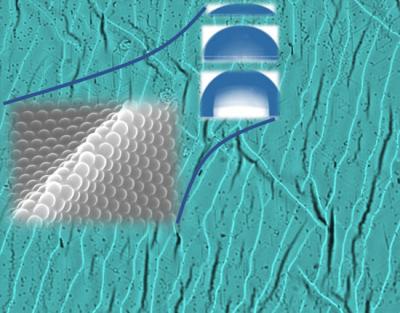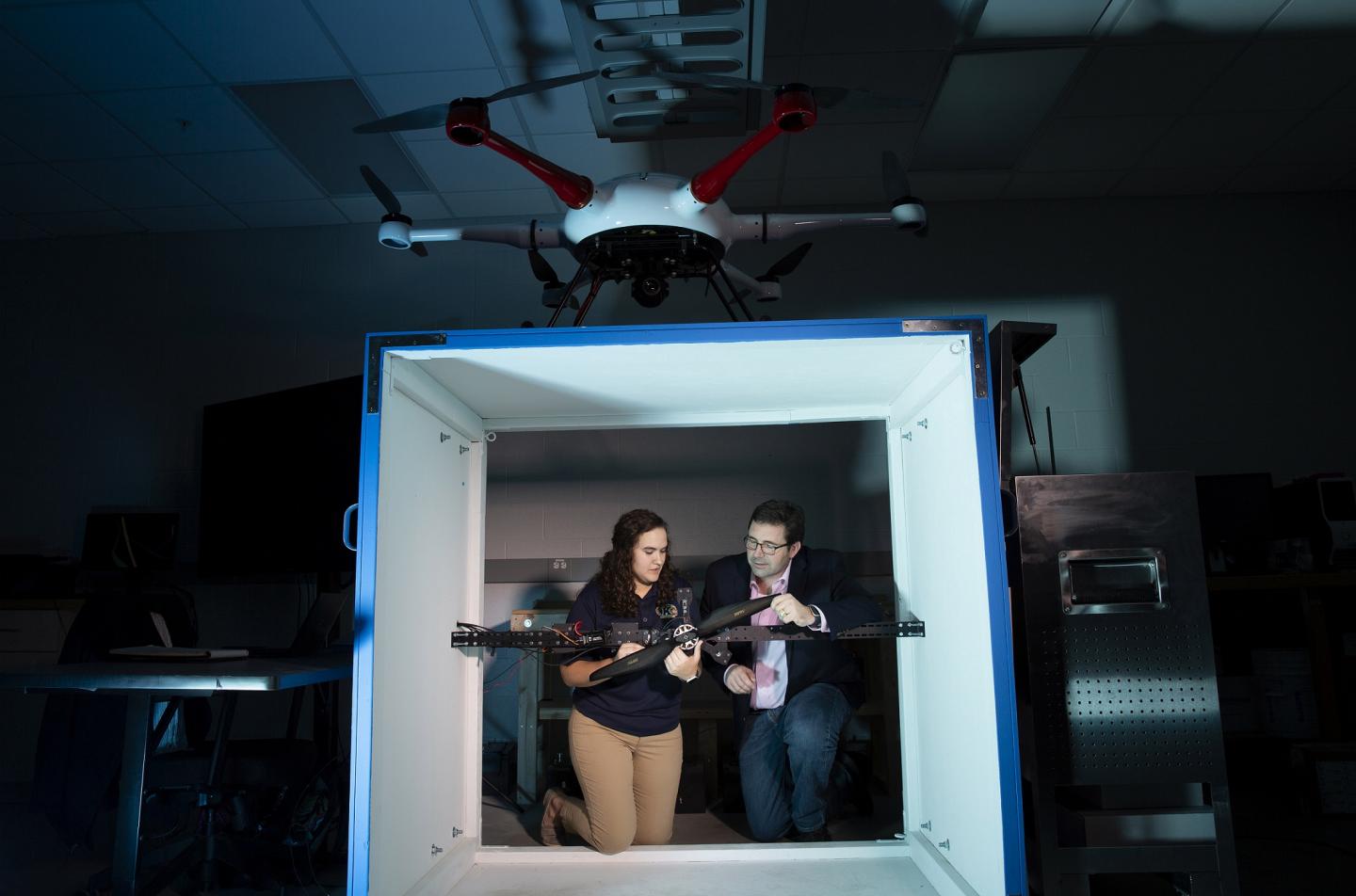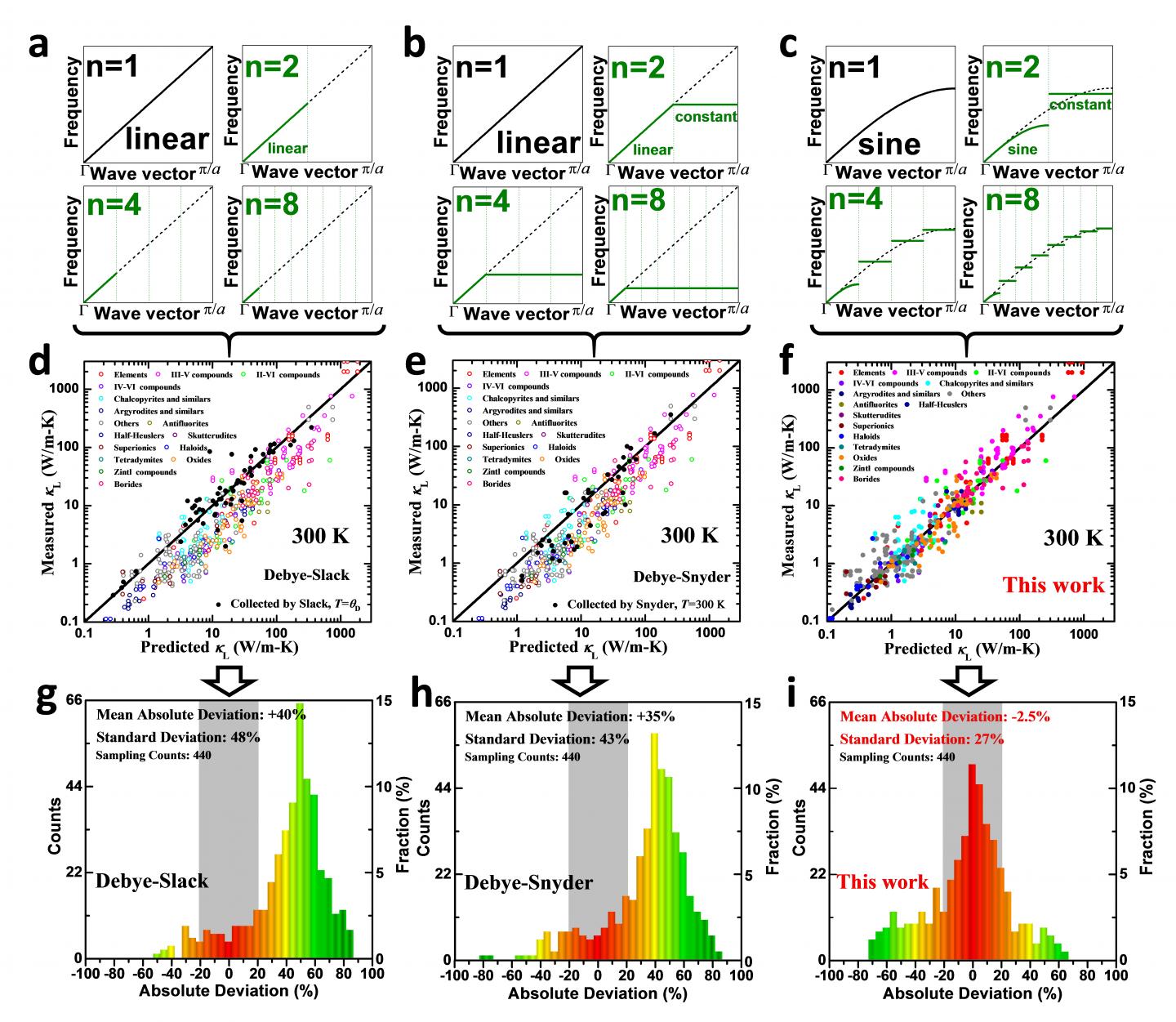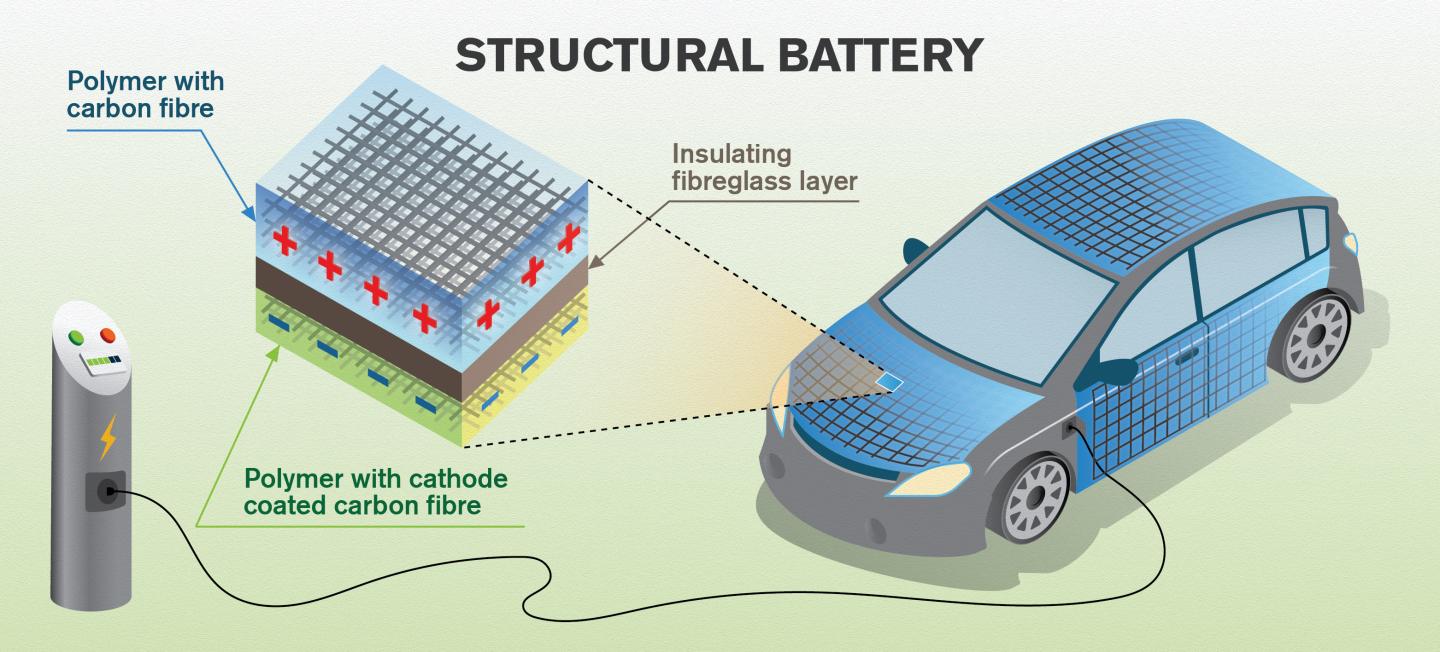
The buckling nature of pre-strained PDMS was applied to the investigation of the dependency of surface hydrophobicity on different geometries of wavy polystyrene thin films, which were fabricated using colloidal self-assembly. This approach can be further applied for fabricating various polymeric nano-films with controlled hydrophobicity.

Blake Stringer, Ph.D. (right), assistant professor of aerospace engineering in Kent State University's College of Aeronautics and Engineering, and research assistant Kendy Edmonds study the power needs for a new larger generation of drones, seen above, for a research grant funded by the Army Research Laboratory.

Comparison on phonon dispersion (a, b and c), measured lattice thermal conductivity versus prediction (d, e and f) and the corresponding error analyses (g, h and i) for Debye-Slack model (a, d and g), Debye-Snyder model (b, e and h) and the one developed in this work considering the periodic boundary condition (c, g and i) for crystalline solids.

The researchers' vision is of vehicles where a large part of the car-body or aeroplane-fuselage consists of structural lithium ion batteries. Multi-functional carbon fibre can work as battery electrodes and load-bearing material consecutively. The researchers work with structural lithium ion batteries where the negative electrodes are made of carbon fiber and the positive electrodes are made of cathode-coated carbon fiber. In the picture, the battery is charged, which means the negative electrode is filled with positively charged lithium ions.